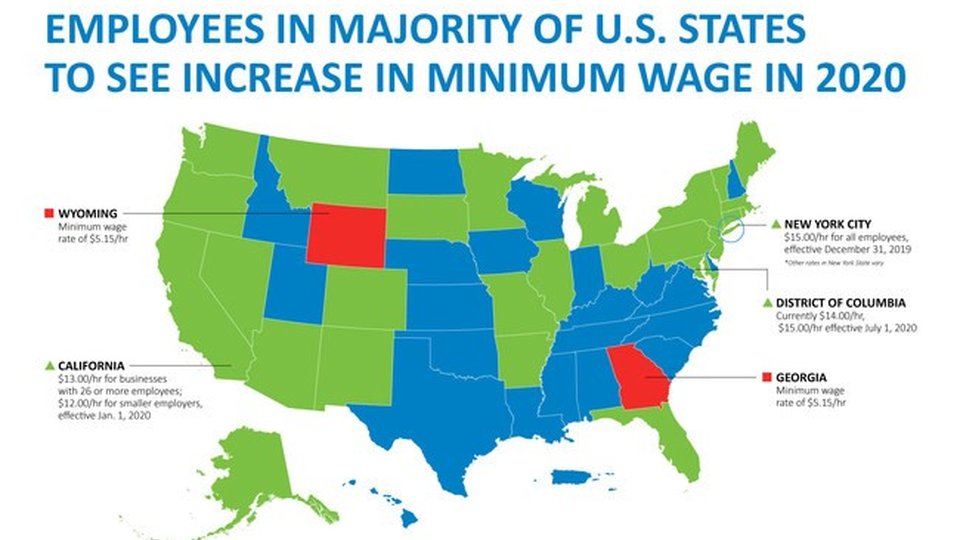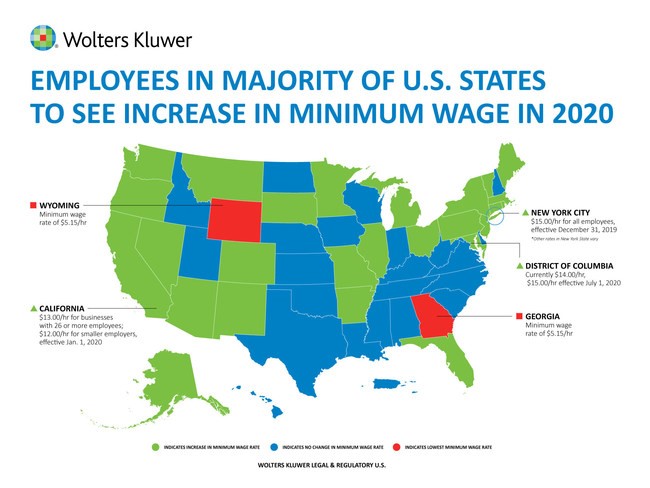Blog
Workers In Majority Of US States To See Minimum Wage Increase In 2020
NEW YORK CITY -- Many states across the country are implementing significant changes in the minimum wage. A total of 26 states and the District of Columbia will raise the minimum wage in 2020, with 22 of those states implementing the increases by Jan. 1. According to payroll experts Wolters Kluwer Legal & Regulatory U.S. The highest rates in the nation are found at the municipal level. Seattle has the highest minimum wage rate at $16 per hour for large employers and $15 for small employers. New York...

December 30, 2019 by Emily Jed
NEW YORK CITY -- Many states across the country are implementing significant changes in the minimum wage. A total of 26 states and the District of Columbia will raise the minimum wage in 2020, with 22 of those states implementing the increases by Jan. 1.
According to payroll experts Wolters Kluwer Legal & Regulatory U.S.The highest rates in the nation are found at the municipal level. Seattle has the highest minimum wage rate at $16 per hour for large employers and $15 for small employers. New York City's minimum wage is set at $15 per hour for all employers.
California will raise the minimum wage rates by $1 on January 1 ($12 per hour for employers with 25 employees or less, and $13 per hour for employers with 26 employees or more), while the highest state rate will remain in Washington at $13.50 per hour.
A few states' wages remain on the lower end of the spectrum, with some state minimums coming in below the federal wage rate, and others with a slower incremental increase. The lowest minimum wage rates of $5.15 are in Georgia and Wyoming. However, most employers and employees would be subject to the higher federal minimum wage rate of $7.25 per hour.
"The increases indicate a move toward ensuring a living wage for people across several states," said Barbara O'Dell, an employment law analyst for Wolters Kluwer Legal & Regulatory U.S. "Some of the new rates are the result of previously approved incremental increases to reach a specific amount that is considered to be a living wage such as California, Colorado, Maine, Washington, whereas other states' increases reflect an annual cost-of-living adjustment, such as Alaska, Florida, Minnesota, Montana."
Those states following the step-up approach tend to have higher minimum wage rates than those taking a cost-of-living adjustment approach. The trend towards regional minimum wages, such as those in New York and Oregon, also reflect lawmakers' recognition that costs of living are higher in large metro areas than they are in other parts of the state.
Wolters Kluwer Legal & Regulatory U.S. summarizes the states that will be impacted in 2020 here.



